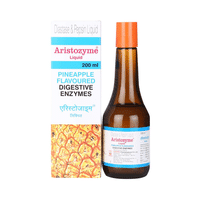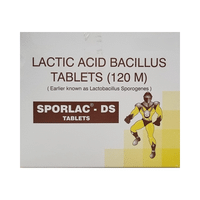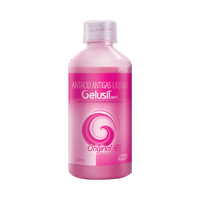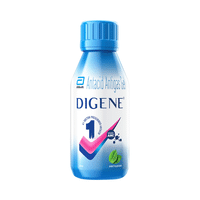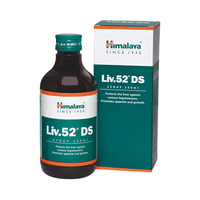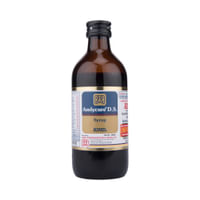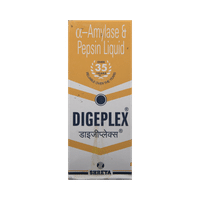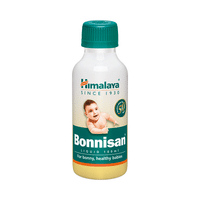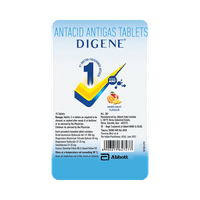Ezivac Powder साठी कृती अन्न
Ezivac Powder साठी कृती दारू
Ezivac Powder साठी कृती गर्भधारणा
Ezivac Powder साठी कृती स्तनपान
अन्न
दारू
गर्भधारणा
स्तनपान
Ezivac Isabgol Husk Powder ला अन्नासोबत घेणे अधिक चांगले आहे
अल्कोहोलसोबत वर्तन अज्ञात आहे. कृपया डॉक्टरांचा सल्ला घ्या. काही नाही
CONSULT YOUR DOCTOR
अज्ञात. मानव आणि प्राणी यांच्यावरील अभ्यास उपलब्ध नाहीत. कृपया तुमच्या डॉक्टरांचा सल्ला घ्या.
CONSULT YOUR DOCTOR
नो इन्फर्मेशन इस अवेलबल ओन् ते उसे ऑफ Ezivac Isabgol Husk Powder ड्यूरिंग लॅक्टेशन. प्लीज़ कन्सल्ट युवर डॉक्टर.
CONSULT YOUR DOCTOR
Ezivac NA Powder साठी क्षार माहिती
Lactitol(NA)
Ezivac powder वापरते
Ezivac Isabgol Husk Powder ला बद्धकोष्ठताच्यामध्ये वापरले जाते.
Ezivac powderकसे कार्य करतो
Ezivac Isabgol Husk Powder परासरणाच्या (ऑस्मोसिस) माध्यमाने आतड्यात पाणी आणण्याचे काम करते, ज्यामुळे मल मृदु होऊन उत्सर्जन सोपे होते.
Ezivac powder चे सामान्य दुष्प्रभाव
निर्जलता
Ezivac Powder साठी विकल्प
कोणतेही विकल्प सापडले नाहीतEzivac Powder साठी निपुण सल्ला
- Lactitol ला 1 आठवड्याहून जास्त वेळ डॉक्टरांच्या सांगण्याशिवाय घेऊ नये, कारण यामुळे आतड्यात हालचाल निर्माण करण्यासाठी लैक्सेटिव क्रियेवर अवलंबून राहण्याची सवय पडू शकते.
- आतड्याच्या क्रियाशीलतेला निरोगी ठेवण्यासाठी Lactitol सोबत अख्ख्या धान्याची पोळी आणि अन्न, साली, फळे आणि हिरव्या पालेभाज्या असलेले फायबर युक्त भोजन घ्यावे.
- Lactitol विशेषत: झोपताना घ्या कारण हे 6 - 8 तासात परिणाम दाखवते.
- जर तुम्ही कमी शुगर असलेले अन्न सेवन करत असाल तर डॉक्टरांना सूचित करा कारण Lactitol मध्ये शुगर असते.
- Lactitol ला इतर औषधे घेण्याच्या 2 तासानंतर घ्या कारण ते इतर औषधांच्या शोषणामध्ये हस्तक्षेप करु शकते.
Ezivac NA Powderसाठी नेहमी विचारले जाणारे प्रश्न
Lactitol
Q. How long does it take for Ezivac Isabgol Husk Powder to work?
It takes about 2-3 days to see the benefits of the treatment. Talk to your doctor if you feel constipated even after 3 days of taking Ezivac Isabgol Husk Powder.
Q. What is Ezivac Isabgol Husk Powder used for?
Ezivac Isabgol Husk Powder is used to treat constipation which is presented as infrequent bowel movements, hard and dry stools. It is also used in patients with hepatic encephalopathy (serious liver problem causing confusion, tremors and decreased level of consciousness).
Q. Is Ezivac Isabgol Husk Powder a laxative?
Yes, Ezivac Isabgol Husk Powder is a laxative which softens the stools by pulling in water from the body to the large intestine. It is also used to reduce the amount of ammonia in the blood of patients with liver disease.













